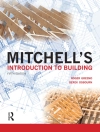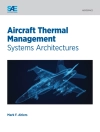A MUST-HAVE, PRACTICAL GUIDE THAT CONNECTS SCHEDULING AND CONSTRUCTION PROJECT MANAGEMENT
In A Contractor’s Guide to Planning, Scheduling, and Control, an experienced construction professional delivers a unique and effective approach to the planning and scheduling responsibilities of a construction project manager, superintendent, or jobsite scheduler. The author describes the complete scheduling cycle, from preconstruction and scheduling through controls and closeout, from the perspective of real-world general contractors and scheduling professionals.
Filled with tools and strategies that actually help contractors build projects, and light on academic jargon and terminology that’s not used in the field, the book includes examples of real craft workers and subcontractors, like electricians, carpenters, and drywallers, to highlight the concepts discussed within. Finally, an extensive appendix rounds out the book with references to additional resources for the reader.
This comprehensive guide includes:
- Thorough introductions to construction contracting, lean construction planning, subcontractor management, and more
- A comprehensive exploration of a commercial case study that’s considered in each chapter, connecting critical topics with a consistent through line
- End-of-chapter review questions and applied exercises
- Access to a companion website that includes additional resources and, for instructors, solutions, additional case studies, sample estimates, and sample schedules
Perfect for upper-level undergraduate students in construction management and construction engineering programs, A Contractor’s Guide to Planning, Scheduling, and Control is also an irreplaceable reference for general contractors and construction project management professionals.
Inhaltsverzeichnis
List of Companion Website Materials xv
List of Figures and Tables xvii
Preface xxi
Acknowledgments xxii
List of Abbreviations xxv
Part I Introductory Topics 1
Chapter 1 Introduction 3
1.1 Schedulers 4
1.2 Schedule types 5
1.3 Introduction to the book 8
1.4 Introduction to the case study 11
1.5 Summary 12
1.6 Review questions 12
Chapter 2 Construction Management 15
2.1 Introduction 15
2.2 Delivery and procurement methods 16
Traditional General Contractor Delivery 16
Construction Management Delivery 17
Part II Planning 33
Chapter 3 Preconstruction 35
Design- Build Delivery 18
Procurement 18
2.3 Contracts 19
2.4 Pricing 20
2.5 Estimating 20
2.6 Project management 24
2.7 General contractor organizations 25
Contractor Team Member Responsibilities 26
2.8 Summary 29
2.9 Review questions 31
2.10 Exercises 31
3.1 Introduction 35
3.2 Preconstruction phase 36
Design Phases 37
3.3 Preconstruction services 38
Budget Estimating 39
Scheduling 39
Constructability Review 42
Partnering 43
Building Information Modeling 44
Sustainable Construction 45
Environmental Compliance45
Planning 46
3.4 Preconstruction contracts 47
3.5 Preconstruction fees 48
3.6 Summary 49
3.7 Review questions 50
3.8 Exercises 51
Chapter 4 Schedule Planning 53
4.1 Introduction 53
4.2 Planning elements 54
Activities 57
4.3 Work breakdown structure 58
Project Item List 59
4.4 Logic 61
Relationships 62
Lag 63
Administrative Restraints 65
4.5 Resources 67
4.6 Variables 68
Interruptions 70
Logic Tools 70
4.7 Collaboration 73
4.8 First draft 74
Bar Chart 74
4.9 Summary 75
4.10 Review questions 76
4.11 Exercises 76
Chapter 5 Lean Construction Planning 79
5.1 Introduction 79
5.2 Activity- based costing 80
5.3 Lean construction 81
Target Value Design 82
Just- In- Time Deliveries 84
Last Planners 84
Pull Planning 85
5.4 Value engineering 87
5.5 Subcontractors and suppliers 88
5.6 Supply chain material management 89
Off- Site Prefabrication 89
Local Material Purchases 90
5.7 Jobsite laydown and material handling 90
5.8 Scheduling lean 91
5.9 Summary 92
5.10 Review questions 94
5.11 Exercises 94
Chapter 6 Contract and Time Considerations 95
6.1 Introduction 95
6.2 Contract documents 95
Potential Contract Documents 98
6.3 Contract language 99
Contractual Terms 100
Liquidated Damages 100
Float 102
6.4 Schedule inclusion 102
Subcontract Agreements 102
6.5 Contractual schedule format 103
6.6 Contractual timeline 104
Commencement 104
Duration 105
Work Days 105
Completion 105
Occupancy Considerations 106
6.7 Risk analysis 108
6.8 Summary 109
6.9 Review questions 110
6.10 Exercises 110
Part III Scheduling 111
Chapter 7 Schedule Types 113
7.1 Introduction 113
7.2 Bar charts 115
7.3 Arrow diagramming method 117
7.4 Precedence diagramming method 118
7.5 Contract schedules 121
7.6 Short- interval schedules 123
7.7 Specialty schedules 124
7.8 Schedule format 127
7.9 Summary 128
7.10 Review questions 129
7.11 Exercises 129
Chapter 8 Schedule Development Process 131
8.1 Introduction 131
8.2 Schedule planning 132
8.3 Schedule development 133
Process 134
Activities 134
Restraints 137
Durations 138
Time 140
Constraints 142
Presentation 142
8.4 Summary schedule 145
8.5 Schedule concepts 146
8.6 Summary 147
8.7 Review questions 148
8.8 Exercises 148
Chapter 9 Schedule Calculations 151
9.1 Introduction 151
Precalculation Refresher 151
9.2 Forward pass 153
9.3 Backward pass 156
9.4 Float 159
Total Float 159
Free Float 161
Strategies 162
9.5 Critical path 164
9.6 Summary 165
9.7 Review questions 166
9.8 Exercises 166
Chapter 10 Resource Balancing 169
10.1 Introduction 169
10.2 Resource allocation 170
10.3 Balancing, not leveling 171
10.4 Labor productivity 172
Construction Crews 175
Overtime Affects 178
10.5 Indirect resources 182
Jobsite General Conditions 182
Construction Equipment 182
Home Office Resources 184
10.6 Reporting 185
10.7 Summary 186
10.8 Review questions 187
10.9 Exercises 187
Chapter 11 Cash Flow Schedule 189
11.1 Introduction 189
11.2 Cash flow schedule process 190
Cost-loaded Schedule 191
Cash Flow Curve 194
11.3 Jobsite expenditures 196
Jobsite Revenue 197
11.4 Net cash flow and impacts to home office 198
Methods to Improve Cash Flow 198
11.5 Summary 200
11.6 Review questions 200
11.7 Exercises 201
Chapter 12 Schedule Technology 203
12.1 Introduction 203
12.2 Software advantages 204
12.3 Microsoft Excel 206
12.4 Microsoft Project 208
12.5 Primavera Project Planner 209
12.6 Touchplan 210
12.7 Other technology tools 213
Power Project by Atlas 213
Smartsheet 213
Building Information Modeling 213
Bluebeam 214
12.8 Software shortcomings 215
12.9 Summary 217
12.10 Review questions 218
12.11 Exercises 218
Part IV Project Controls 219
Chapter 13 Schedule Control 221
13.1 Introduction 221
13.2 Schedule control tools 222
13.3 Schedule control techniques 223
13.4 Contract schedule: Status, update and/or revise 225
Schedule Status 225
Schedule Updates 228
Schedule Revisions 231
Recovery Schedules 232
13.5 Three- week look- ahead schedules 233
To- Do Lists 235
13.6 Summary 237
13.7 Review questions 239
13.8 Exercises 239
Chapter 14 Scheduling Tools 241
14.1 Introduction 241
14.2 Submittal schedule 242
Types of Submittals 244
Submittal Processing 244
14.3 Project management scheduling tools 248
Pay Requests 248
Monthly Fee Forecast 248
Float Management 249
As- built Schedule 250
14.4 Site supervision scheduling tools 250
Pull Schedules 251
Concrete Pour Schedules 251
Equipment Schedule 252
Tower Crane Schedules 254
Daily Job Diary 254
14.5 Reports 256
14.6 Technology tools 258
Building Information Modeling 259
Resources 259
14.7 Summary 260
14.8 Review questions 261
14.9 Exercises 261
Chapter 15 Jobsite Control Systems 263
15.1 Introduction 263
15.2 Safety control 265
15.3 Cost control 266
Change Order Processing 269
Pay Request Processing 270
15.4 Quality control 270
15.5 Document control 271
15.6 Additional jobsite control systems 272
Environmental Controls 272
Traffic Control 272
Jobsite Laydown Management 273
Material Management 273
Equipment Management 274
15.7 Summary 274
15.8 Review questions 275
15.9 Exercises 275
Chapter 16 Earned Value Management 277
16.1 Introduction 277
16.2 Development of the third curve 277
16.3 Earned value as a construction management control tool 278
Schedule Status 279
Cost Status 280
16.4 Earned value indices 282
16.5 Forecasting 285
16.6 Earned value as a pay request tool 286
16.7 Summary 287
16.8 Review questions 287
16.9 Exercises 288
Chapter 17 Subcontract Management 291
17.1 Introduction 291
17.2 Subcontracted scopes of work 292
17.3 Subcontract documents 293
17.4 Subcontractor prequalification 294
Early Release of Subcontractor and Supplier Bid Packages 294
17.5 Subcontractor selection 295
17.6 Team building 296
17.7 Subcontractor management 297
Collaborative Scheduling 297
Subcontractor Controls 299
Supplier Management 301
17.8 Summary 301
17.9 Review questions 303
17.10 Exercises 303
Chapter 18 Schedule Impacts 305
18.1 Introduction 305
18.2 Time value of money 306
18.3 Time and cost trade- offs 307
18.4 As- built schedules 308
18.5 Claims 310
Sources of Claims 310
Claim Prevention 313
Claim Preparation 314
Claim Defense 316
Claim Resolution 317
18.6 Legal impacts 318
18.7 Risk management 319
18.8 PERT and other advanced scheduling methods 320
18.9 Summary 322
18.10 Review questions 324
18.11 Exercises 324
Glossary 327
References 349
Five Sample Case Studies 351
Case 40: Glazing schedule 351
Case 41: Drywall subcontractor 352
Case 42: Liquidated damages 352
Case 43: Schedule hold 354
Case 77: Subcontractor Quality Control 355
Index 357
Über den Autor
LEN HOLM is Associate Teaching Professor at the University of Washington. He has nearly 50 years of experience in construction industry and also owns a construction management firm.












